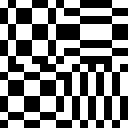WHITEOUT
(2019 - 2020) ////////////// created after joining the Armada de Chile on a research trip to Antarctica organised by Nicolas Spencer for Polar it was also inspired by research done for Axis with Mario de Vega and my time at ARTS COLLIDE Barcelona CERN
(2019 - 2020) ////////////// created after joining the Armada de Chile on a research trip to Antarctica organised by Nicolas Spencer for Polar it was also inspired by research done for Axis with Mario de Vega and my time at ARTS COLLIDE Barcelona CERN
WHITEOUT (2020)
Shaken by the discovery of racist bias encoded in standard calibration regimes, the Angel searches for a true colour reference. She builds a Rainbow Generator, designed to Refract a Spectrum of Lost and Un/Named Colours.
When it finally powers on, the Generator fails to reproduce nature’s original glitch: the continuous gradient of the rainbow.
Instead, it renders a banded, artificial, almost cartoon-like spectrum.
After hours of testing, she isolates the cause of the truncation: an energy-efficient, narrow-band light source.
Though the Rainbow Generator appears to emit full-spectrum white light, this is simulated. Its light source only emits a narrow band of frequencies: just enough to stimulate the three cones of her eye, creating the illusion of white and coloured light, while bypassing vast regions of the actual spectrum.
Ironically, the failed Rainbow exposes its own efficiency-driven bias. Advanced technologies prioritise certain signals over others: by bypassing a broad spectrum of frequencies in favor of energy efficiency, it exposes how standardisation doesn’t just limit what can be resolved; it determines what qualifies as a valid signal in the first place.
The Angel now sees that even the latest technologies (from analogue to digital and hardware to software and lens to filter) may be rooted in fundamentally flawed protocols of exclusion.
In desperation, she considers modifying her body to regain access and control over excluded frequencies around her. Perhaps all she needs is a different kind of eye: one that is larger, slower, or sensitive to other wavelengths of light.
When she finally mounts an antenna in her eye sockets, she gains access to an expanded visual ecology. But the modification quickly leads to a Whiteout: oversaturated with signal, devoid of resolution.
When it finally powers on, the Generator fails to reproduce nature’s original glitch: the continuous gradient of the rainbow.
Instead, it renders a banded, artificial, almost cartoon-like spectrum.
After hours of testing, she isolates the cause of the truncation: an energy-efficient, narrow-band light source.
Though the Rainbow Generator appears to emit full-spectrum white light, this is simulated. Its light source only emits a narrow band of frequencies: just enough to stimulate the three cones of her eye, creating the illusion of white and coloured light, while bypassing vast regions of the actual spectrum.
Ironically, the failed Rainbow exposes its own efficiency-driven bias. Advanced technologies prioritise certain signals over others: by bypassing a broad spectrum of frequencies in favor of energy efficiency, it exposes how standardisation doesn’t just limit what can be resolved; it determines what qualifies as a valid signal in the first place.
The Angel now sees that even the latest technologies (from analogue to digital and hardware to software and lens to filter) may be rooted in fundamentally flawed protocols of exclusion.
In desperation, she considers modifying her body to regain access and control over excluded frequencies around her. Perhaps all she needs is a different kind of eye: one that is larger, slower, or sensitive to other wavelengths of light.
When she finally mounts an antenna in her eye sockets, she gains access to an expanded visual ecology. But the modification quickly leads to a Whiteout: oversaturated with signal, devoid of resolution.
Spectrum of Lost and Unnamed Colours Sound by Debit (2024)

Rainbow Generator (2024).
W/ Support from Herman Hermsen and So Kanno.
W/ Support from Herman Hermsen and So Kanno.
A Spectrum of Lost and Unnamed Colours(2023 - 2024)
//////////////////////////// was commissioned and produced in the framework of EPFL - CDH Artist in Residence Program 2023, Enter the Hyper-Scientific
Partners: EPFL Center for Imaging, Edward Andò, CLIMACT Center for Climate Impact and Action UNIL & EPFL
Curator & head of program: Giulia Bini
Master support: Lotte Menkman

